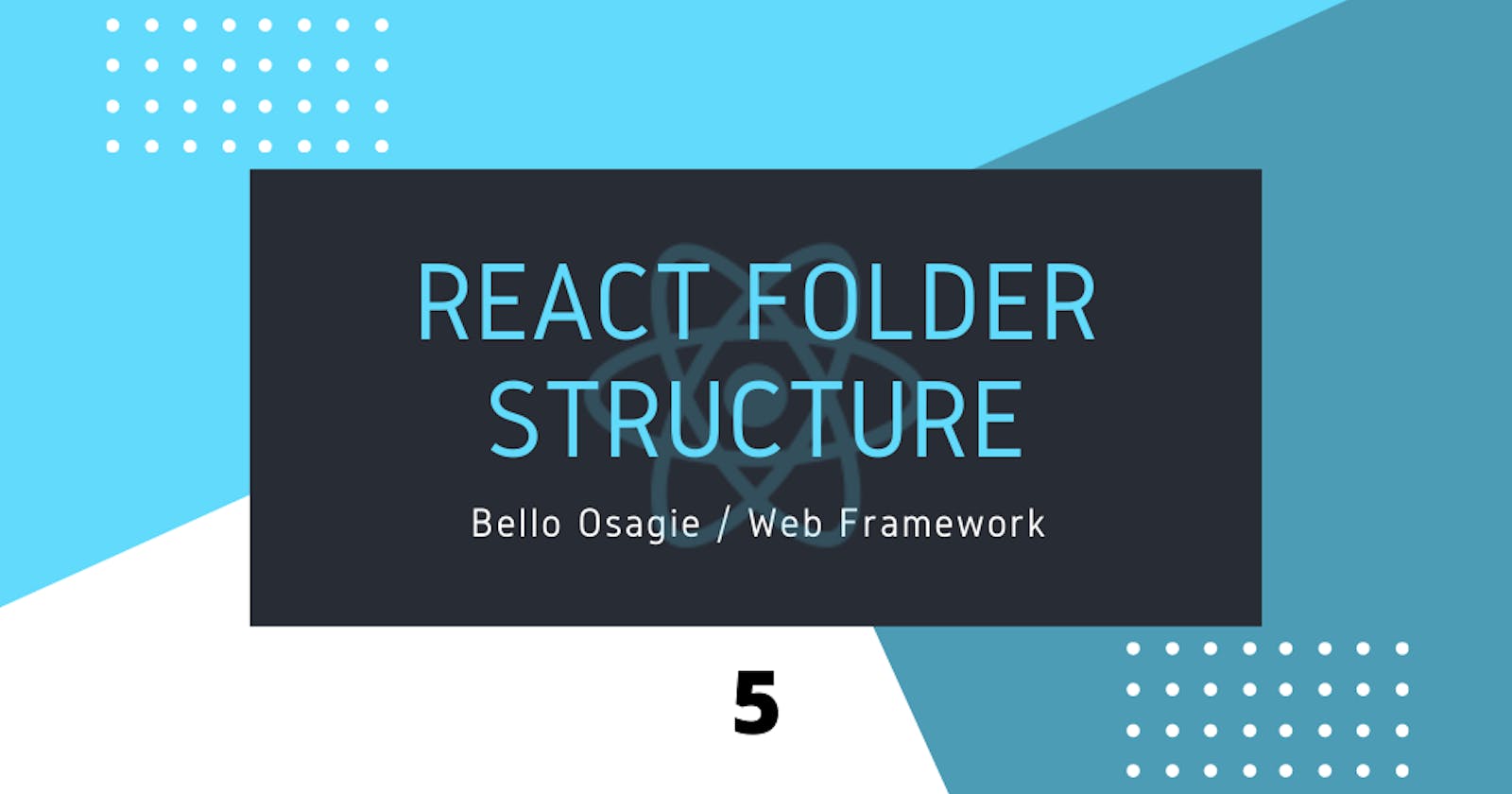React has a couple of folders set up configured already after the installation of the starter React app.
Files, folders, and dependencies are installed by the create-react-app tool.
Folder Structure
package.json file
The file contains 3 major modules react, react-dom, and react-script. For example, react-script is responsible for the app build. The react-script can be used to start the app server, build, store or deploy an app, test an app, eject all current and future installed dependencies in the file, package.json.
You can not undo the ejection operation. So avoid the command
npm ejectfor now! The commandnpm startwill be used more often to run the server.
package.json
{
"name": "my-app",
"version": "0.1.0",
"private": true,
"dependencies": {
"@testing-library/jest-dom": "^5.11.6",
"@testing-library/react": "^11.2.2",
"@testing-library/user-event": "^12.6.0",
"react": "^17.0.1",
"react-dom": "^17.0.1",
"react-scripts": "4.0.1",
"web-vitals": "^0.2.4"
},
"scripts": {
"start": "react-scripts start",
"build": "react-scripts build",
"test": "react-scripts test",
"eject": "react-scripts eject"
},
... ... ...
... ... ...
... ... ...
}
Anytime you install any dependencies, the package.json adds them to the JSON (JavaScript Object Notation) object automatically
The react-dom module gives access to all ReactDOM APIs, import ReactDOM from 'react-dom' like rendering components to the DOM (Document Object Model). The react module must be installed before you get access to the react-dom module.
eslintConfig
The eslintConfig is a package used with both the eslint-plugin-react and Jest rules to support React syntax. It allows the linting to warn in case of errors.
},
"eslintConfig": {
"extends": [
"react-app",
"react-app/jest"
]
},
... ... ...
... ... ...
... ... ...
}
node_module
The folder holds dependencies and sub-dependencies of the modules react, react-dom and react-script in the package.json file.
Avoid editing files and folders! The entire app relies on the folder.
public folder
The root folder contains few files such as index.html, favicon.ico, manifest.json, and images for the app icon for different browsers and OS.
The index.html contains the root element <div id="root"></div>. This is where components from the index.js file are mounted before rendered to the screen.
Since the tool, Create React App gives a progressive app out of the box, the manifest.json file allows us to define some metadata about our app.
More metadata can be added to the head element. Notice there is no script element in the index.html. This is because NPM installed the create-react-app package that contains the script metadata in form of dependencies. This means you can integrate React with any library, be it CSS (Cascading Style Sheet) library like Bootstrap, JavaScript library like jQuery (not recommended), etc via npm instead of manually adding them in the metadata. For example, the command npm install bootstrap.
public/index.html
<!DOCTYPE html>
<html lang="en">
<head>
<meta charset="utf-8" />
<link rel="icon" href="%PUBLIC_URL%/favicon.ico" />
<meta name="viewport" content="width=device-width, initial-scale=1" />
<meta name="theme-color" content="#000000" />
<meta
name="description"
content="Web site created using create-react-app"
/>
<link rel="apple-touch-icon" href="%PUBLIC_URL%/logo192.png" />
<!--
manifest.json provides metadata used when your web app is installed on a user's mobile device or desktop. See https://developers.google.com/web/fundamentals/web-app-manifest/
-->
<link rel="manifest" href="%PUBLIC_URL%/manifest.json" />
<!--
Notice the use of %PUBLIC_URL% in the tags above.
It will be replaced with the URL of the `public` folder during the build.
Only files inside the `public` folder can be referenced from the HTML.
Unlike "/favicon.ico" or "favicon.ico", "%PUBLIC_URL%/favicon.ico" will
work correctly both with client-side routing and a non-root public URL.
Learn how to configure a non-root public URL by running `npm run build`.
-->
<title>React App</title>
</head>
<body>
<noscript>You need to enable JavaScript to run this app.</noscript>
<div id="root"></div>
<!--
This HTML file is a template.
If you open it directly in the browser, you will see an empty page.
You can add webfonts, meta tags, or analytics to this file.
The build step will place the bundled scripts into the <body> tag.
To begin the development, run `npm start` or `yarn start`.
To create a production bundle, use `npm run build` or `yarn build`.
-->
</body>
</html>
Try to inspect the root element in future articles to notice nested elements injected into it when creating an app in React.
src folder
The src folder contains files to edit.
App.js
import logo from './logo.svg';
import './App.css';
function App() {
return (
<div className="App">
<header className="App-header">
<img src={logo} className="App-logo" alt="logo" />
<p>
Edit <code>src/App.js</code> and save to reload.
</p>
<a
className="App-link"
href="https://reactjs.org"
target="_blank"
rel="noopener noreferrer"
>
Learn React
</a>
</header>
</div>
);
}
export default App;
Edit the App.js.
App.js
import React from "react";
import "./App.css";
function App() {
return (
<div className="App">
<header className="App-header">
<h3>Hello World</h3>
<p>
You are now editing the <code>App.js</code> file
</p>
</header>
</div>
);
}
export default App;
Exit the server with
ctrl+c. Happy Coding!!!
Techstack | Flutterwave
Techstack article, sponsored by Flutterwave. Flutterwave is the easiest way to make and accept payments both online and offline from customers anywhere in the world. It is absolutely free! Also, you get a Flutterwave dollar barter card when you signup. Open an online store and take your business anywhere in the world.
Support what I do and push me to keep making free content.



